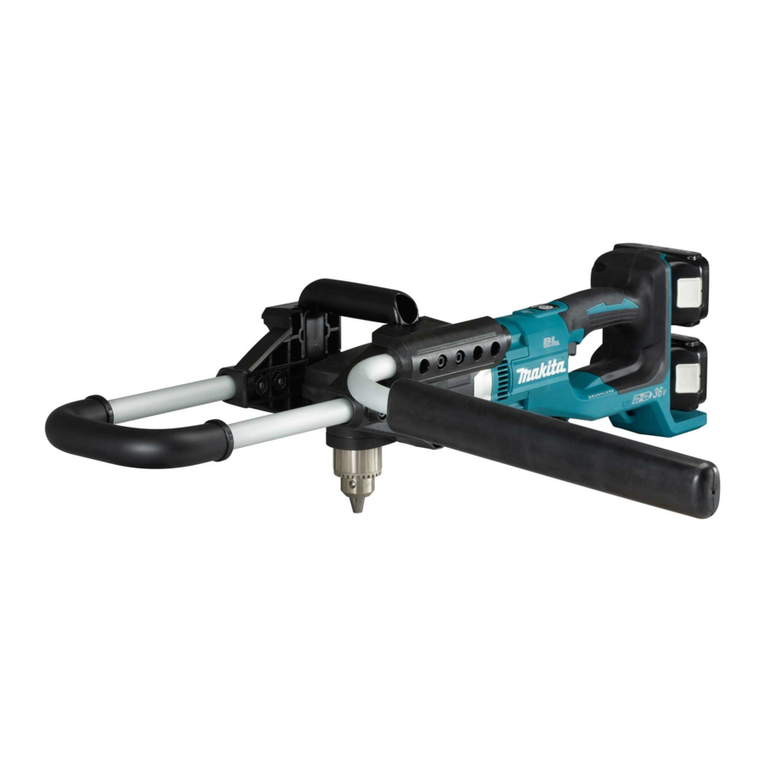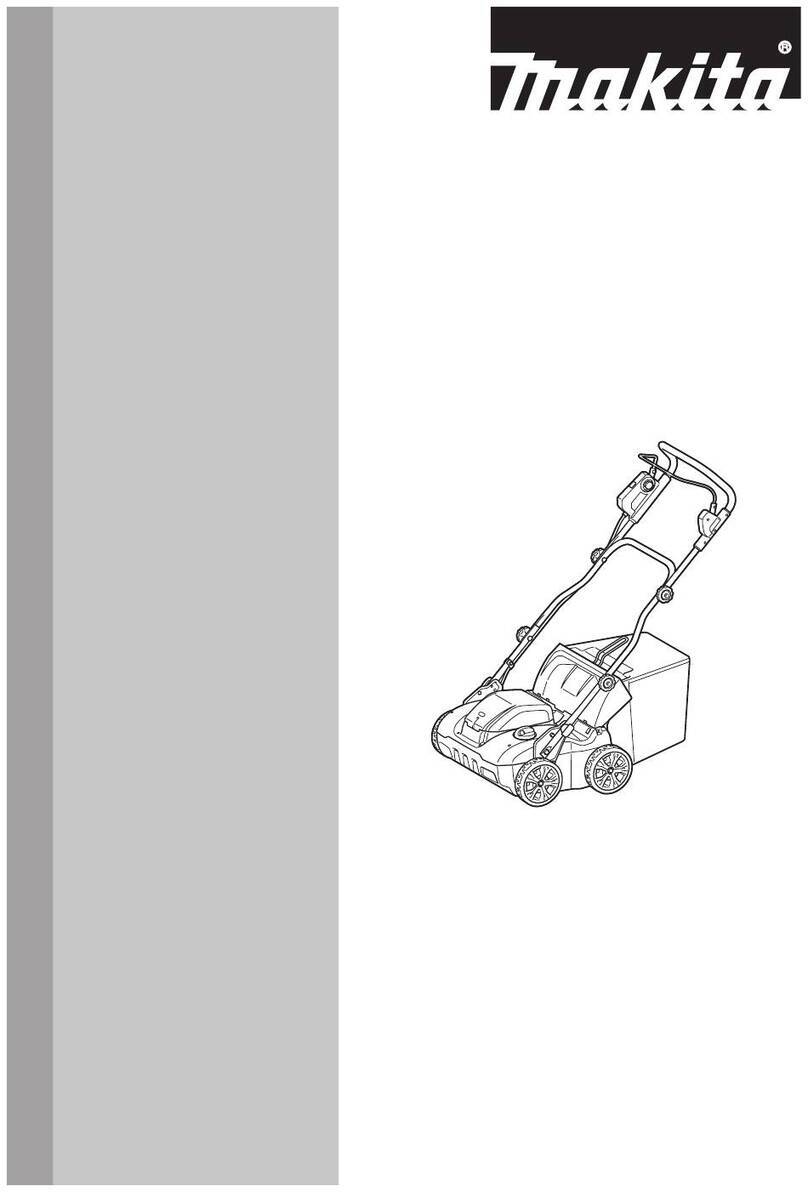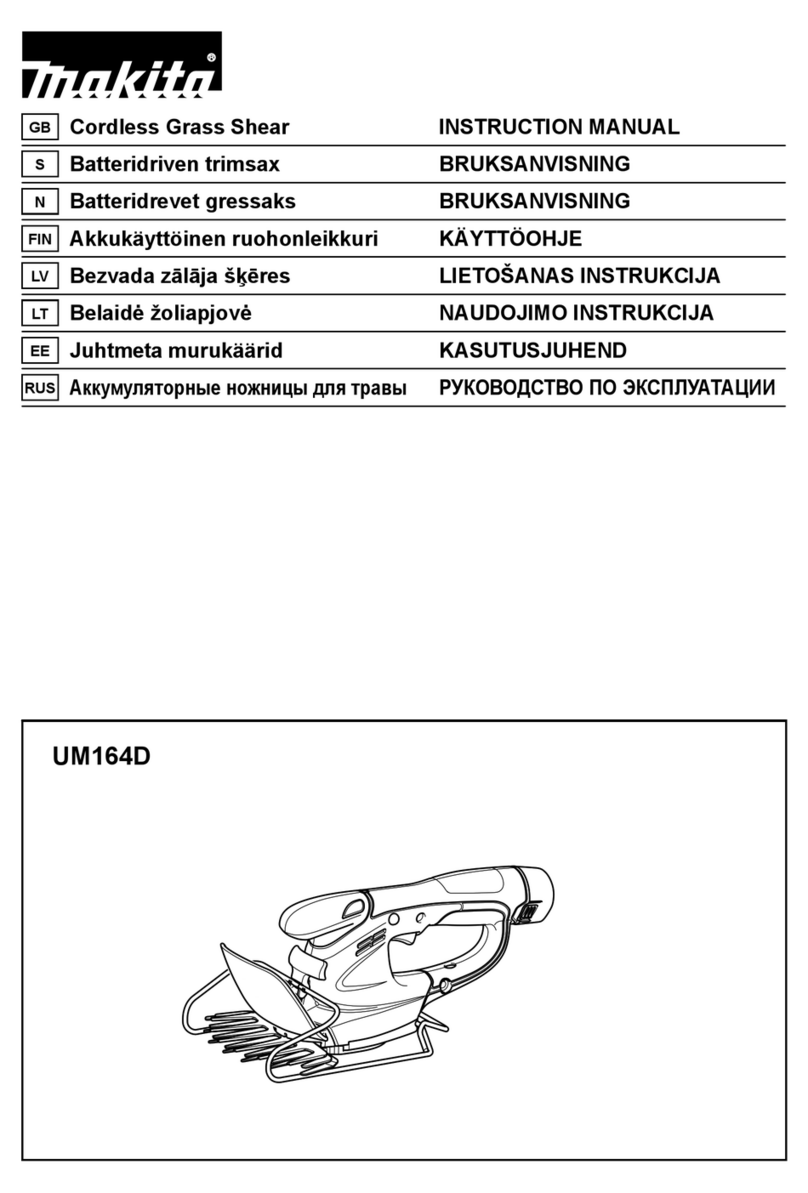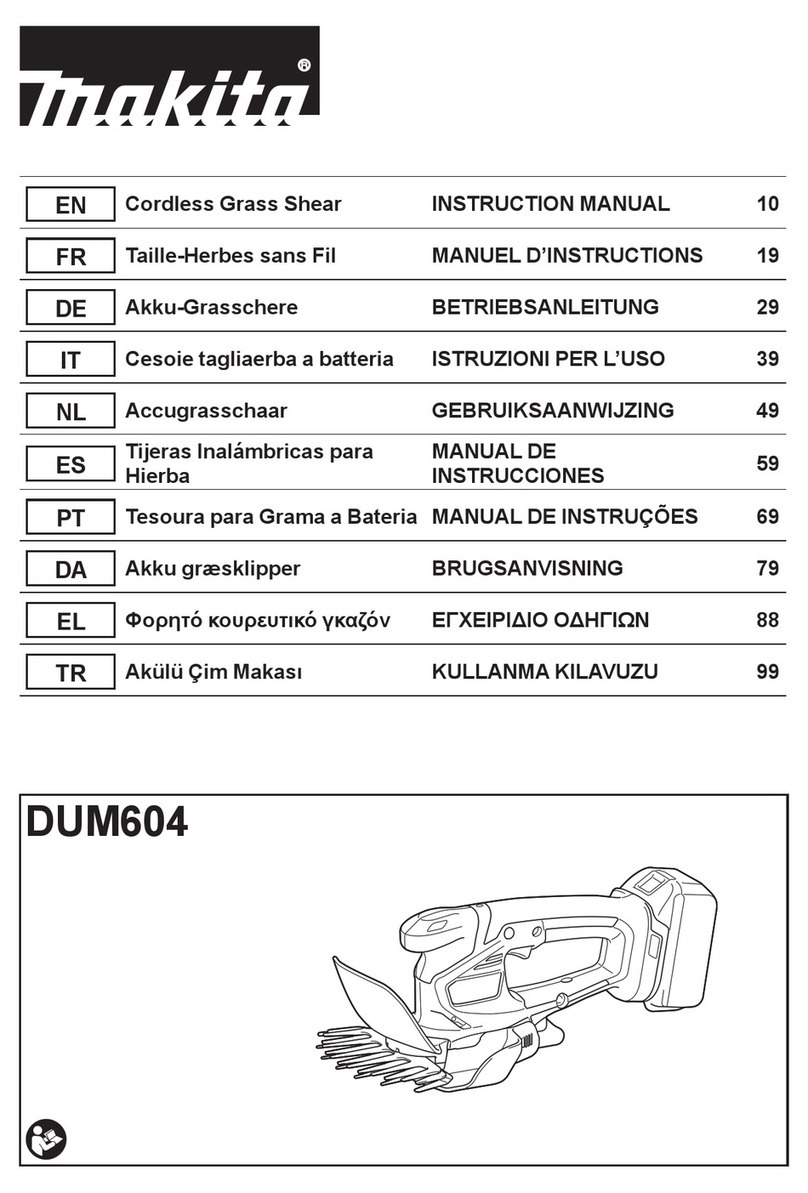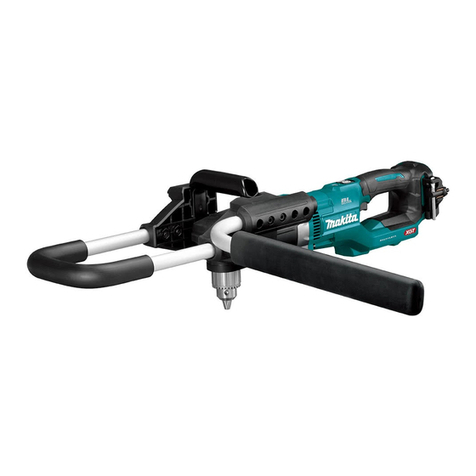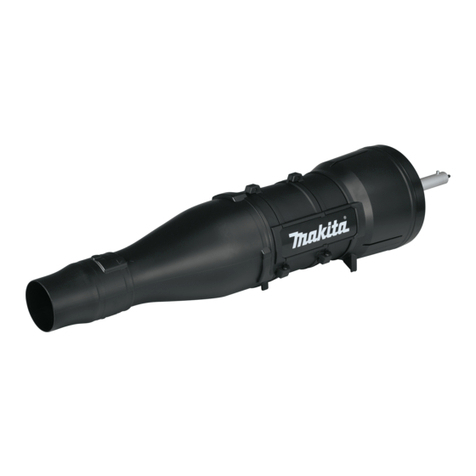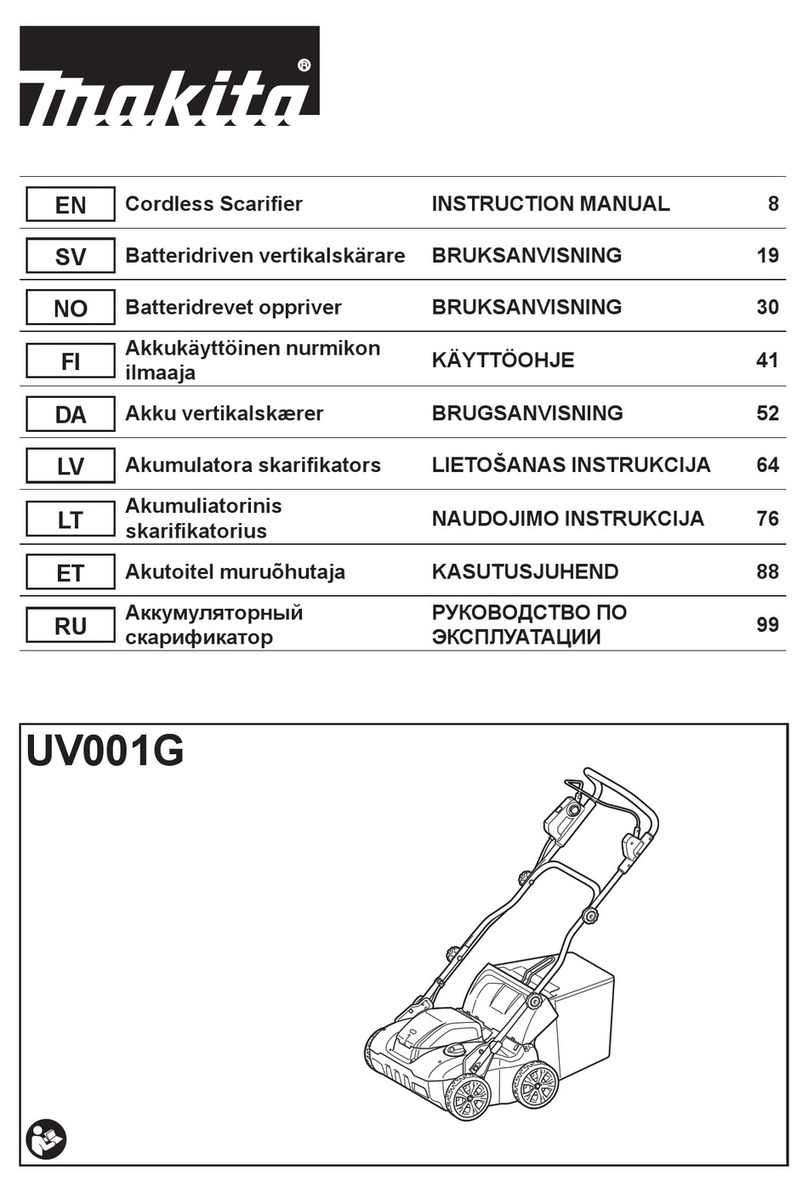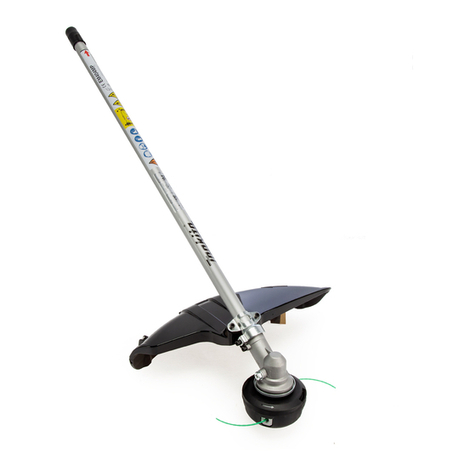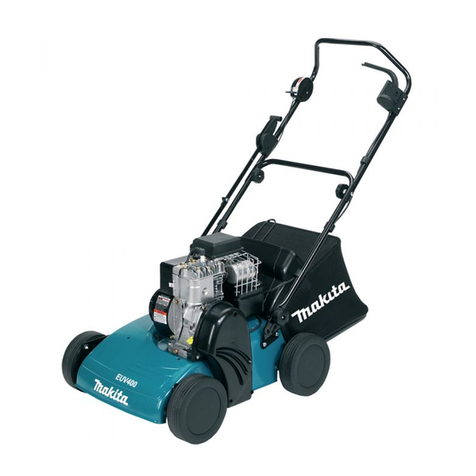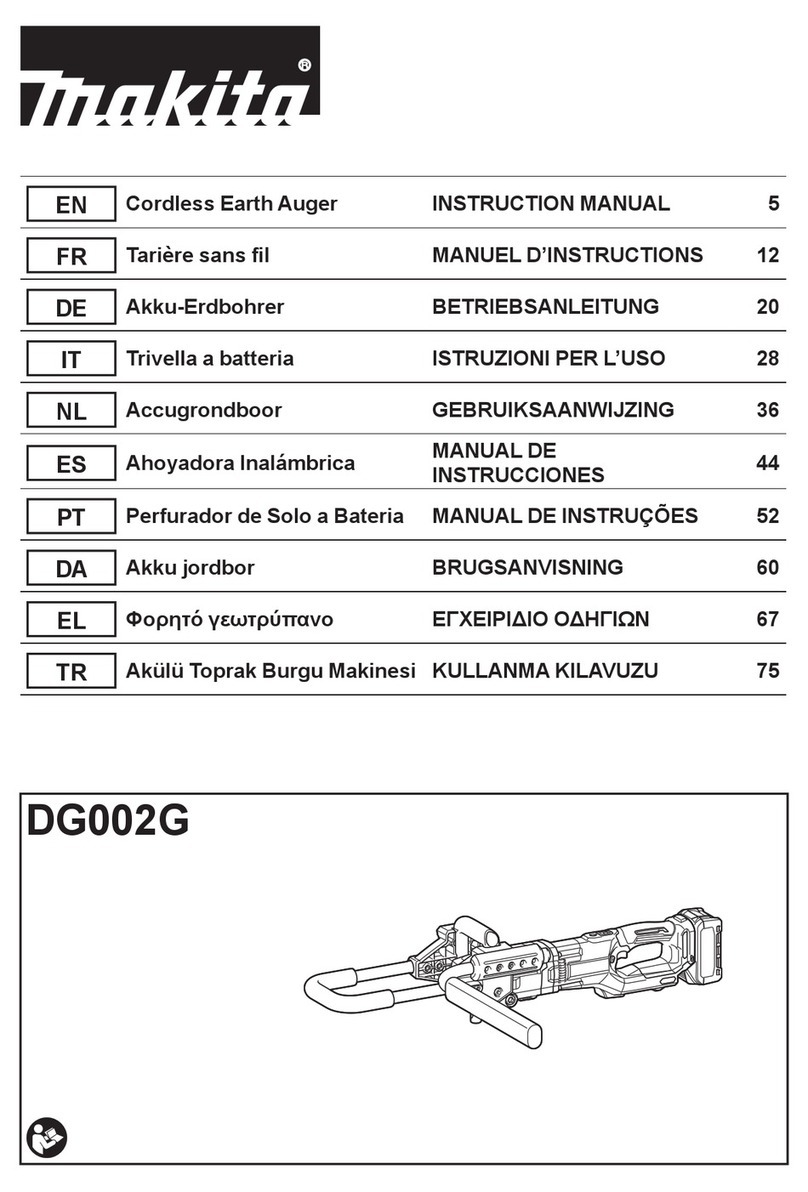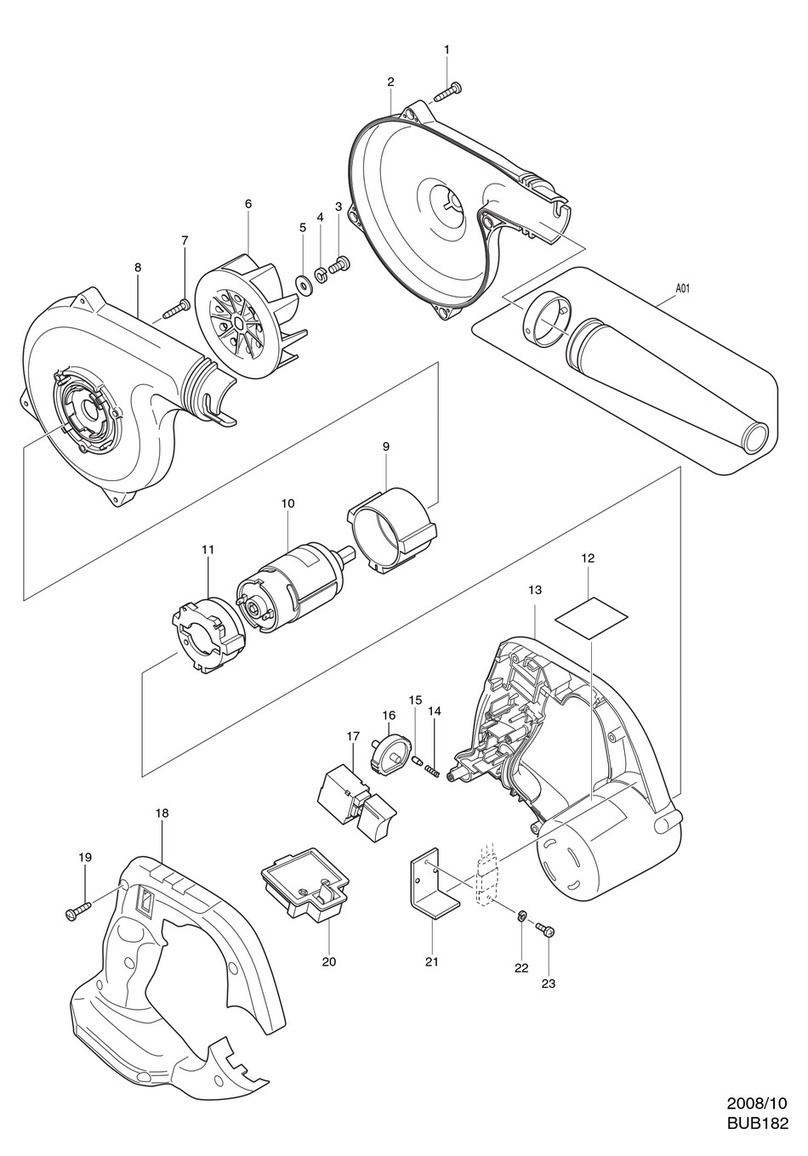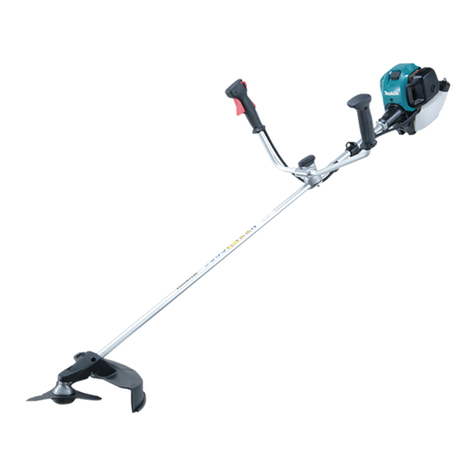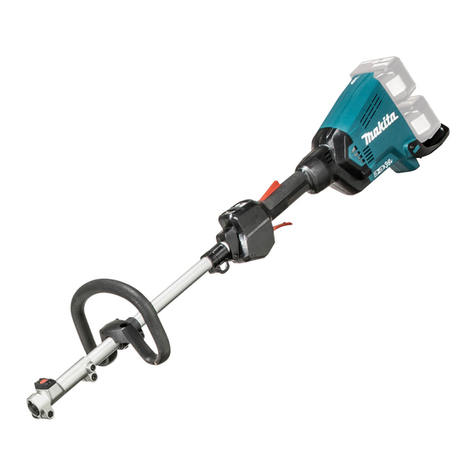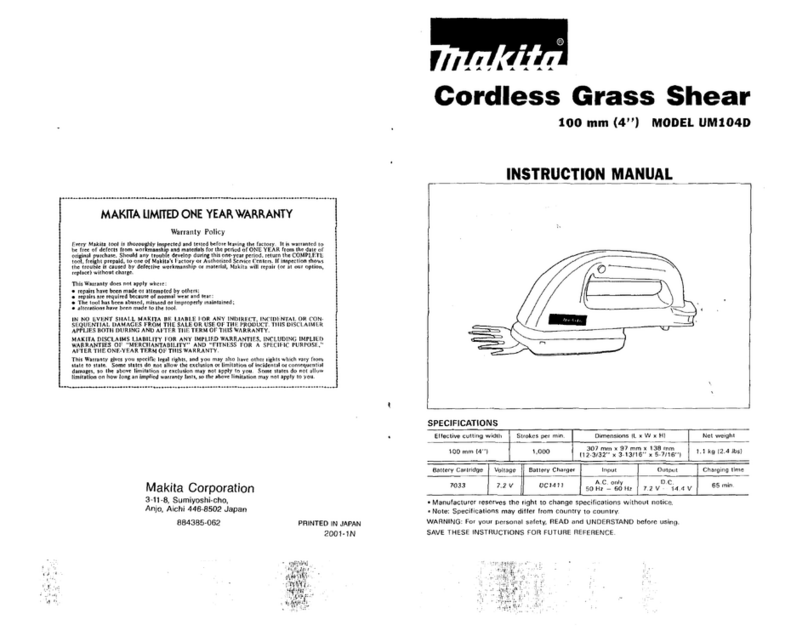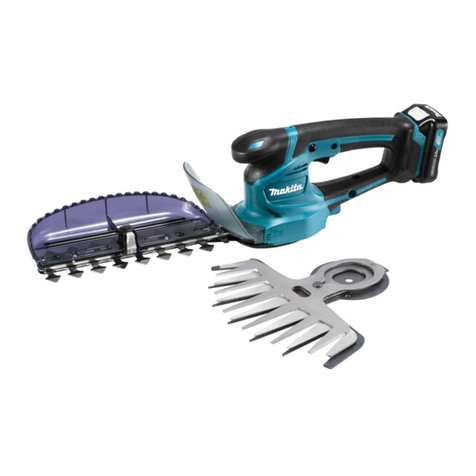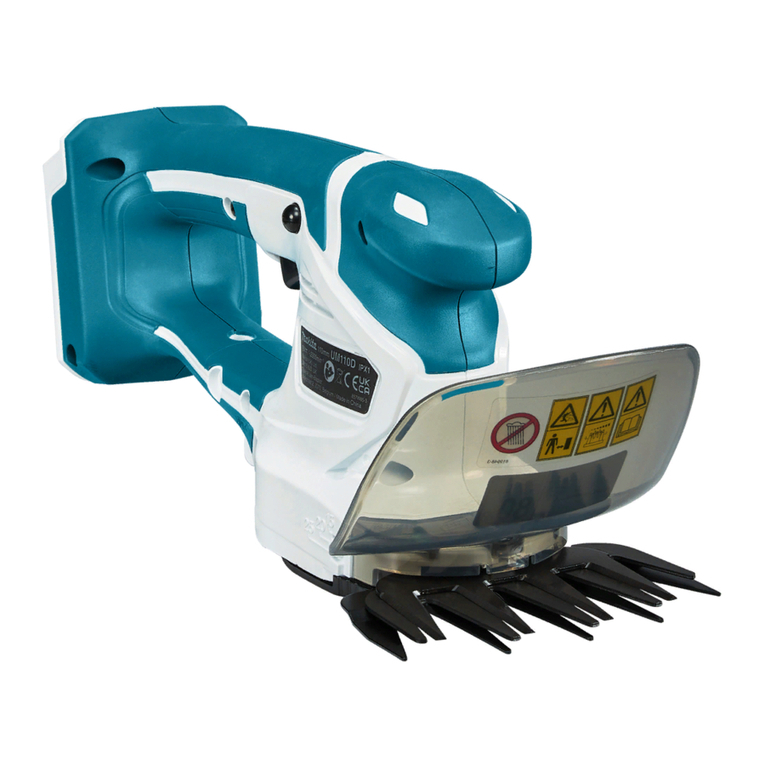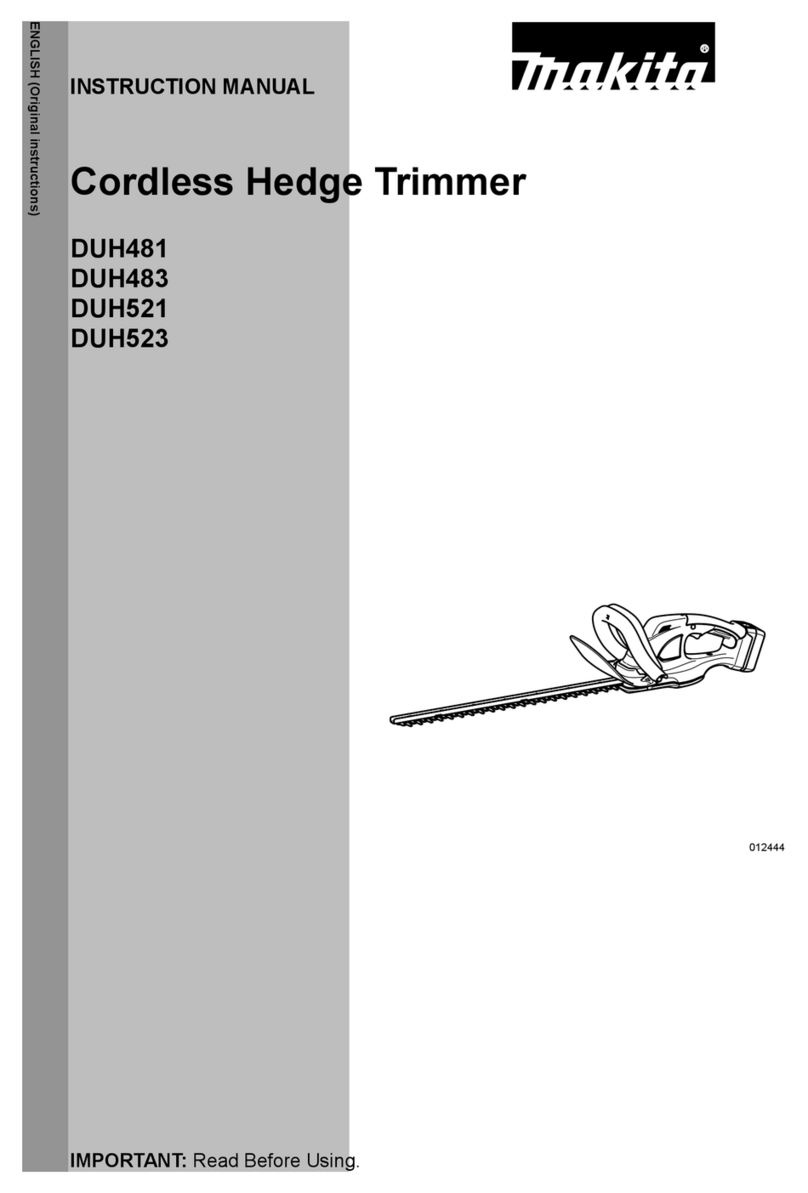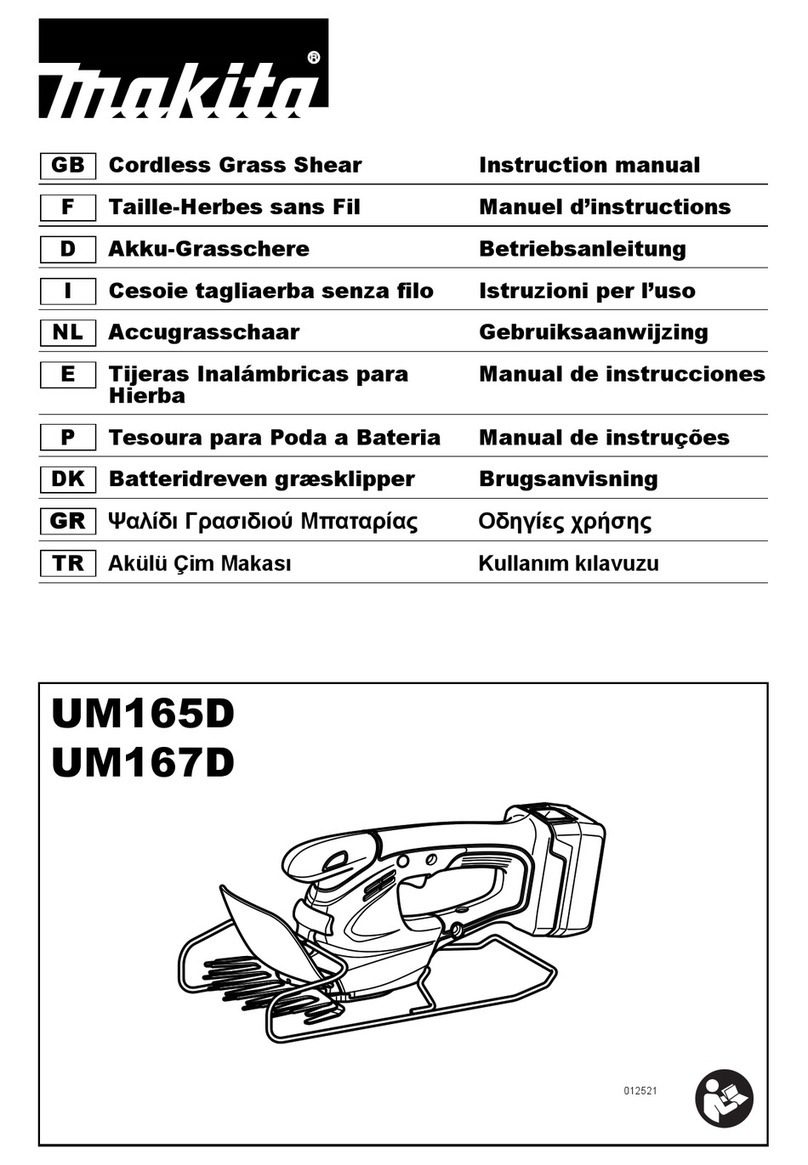
7ENGLISH
Important safety instructions for
battery cartridge
1.
Before using battery cartridge, read all instruc-
tions and cautionary markings on (1) battery
charger, (2) battery, and (3) product using battery.
2. Do not disassemble or tamper with the battery
cartridge.
o r e x p l o s i o n .
3. If operating time has become excessively
shorter, stop operating immediately. It may
result in a risk of overheating, possible burns
and even an explosion.
4 .
If electrolyte gets into your eyes, rinse them out
with clear water and seek medical attention right
away. It may result in loss of your eyesight.
5. Do not short the battery cartridge:
( 1) Do not touch the terminals with any con-
ductive material.
( 2) Avoid storing battery cartridge in a con-
tainer with other metal objects such as
nails, coins, etc.
( 3) Do not expose battery cartridge to water
or rain.
A battery short can cause a large current
breakdown.
6. Do not store and use the tool and battery car-
tridge in locations where the temperature may
reach or exceed 50 °C (122 °F).
7 . Do not incinerate the battery cartridge even if
it is severely damaged or is completely worn
8. Do not nail, cut, crush, throw, drop the battery
cartridge, or hit against a hard object to the
battery cartridge. S u c h c o n d u c t m a y r e s u l t i n a
9. Do not use a damaged battery.
10.
The contained lithium-ion batteries are subject to
the Dangerous Goods Legislation requirements.
f o r w a r d i n g a g e n t s , s p e c i a l r e q u i r e m e n t o n p a c k -
-
i n g a n e x p e r t f o r h a z a r d o u s m a t e r i a l i s r e q u i r e d .
n a t i o n a l r e g u l a t i o n s .
a r o u n d i n t h e p a c k a g i n g .
11. When disposing the battery cartridge, remove
it from the tool and dispose of it in a safe
place. Follow your local regulations relating to
disposal of battery.
12. Use the batteries only with the products
-
s i v e h e a t , e x p l o s i o n , o r l e a k o f e l e c t r o l y t e .
13. If the tool is not used for a long period of time,
the battery must be removed from the tool.
14 . During and after use, the battery cartridge may
take on heat which can cause burns or low
temperature burns. Pay attention to the han-
dling of hot battery cartridges.
15. Do not touch the terminal of the tool imme-
diately after use as it may get hot enough to
cause burns.
16. Do not allow chips, dust, or soil stuck into the
terminals, holes, and grooves of the battery
cartridge.
-
17 . Unless the tool supports the use near
high-voltage electrical power lines, do not use
the battery cartridge near high-voltage electri-
cal power lines. It m a y r e s u l t i n a m a l f u n c t i o n o r
18. Keep the battery away from children.
SAVE THESE INSTRUCTIONS.
CAUTION: Only use genuine Makita batteries.
a l s o v o i d t h e M a k i t a w a r r a n t y f o r t h e M a k i t a t o o l a n d
c h a r g e r .
Tips for maintaining maximum
battery life
1. Charge the battery cartridge before completely
discharged. Always stop tool operation and
charge the battery cartridge when you notice
less tool power.
2.
Never recharge a fully charged battery cartridge.
Overcharging shortens the battery service life.
3.
Charge the battery cartridge with room tempera-
ture at 10 °C - 40 °C (50 °F - 104 °F). Let a hot
battery cartridge cool down before charging it.
4 . When not using the battery cartridge, remove
it from the tool or the charger.
5. Charge the battery cartridge if you do not use
it for a long period (more than six months).
INITIAL SETTING
CAUTION: Always be sure that the tool is
before carrying out any work on the tool.
PARTS DESCRIPTION
Fig.1
1M a i n t o o l 2F r o n t h a n d l e
3S i d e h a n d l e 4R e a c t i o n r e c e i v e r
5B o l t 6W r e n c h
-N o m i n a l d i a m e t e r
W r e n c h s i z e ( H )
M 12 10 m m
BM 8 6 m m
CM 6 5 m m

